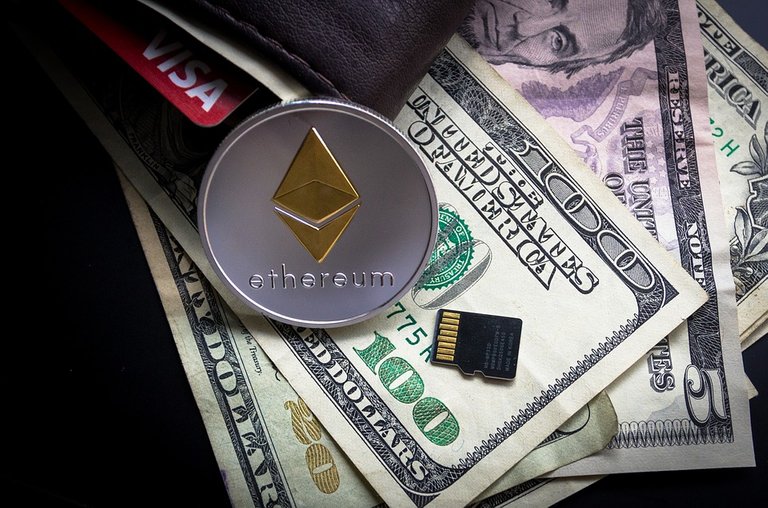Introduction
The cryptocurrency community has experienced cryptocurrencies being birthed, with soft and hard forks happening; most times it is difficult for the cryptocurrencies to thrive after a fork, as the users become unsure about which to go with. However, there are some forked cryptocurrencies that still maintain their formidability. Let us look at Ethereum and Ethereum Classic.

(Image Source : https://pixabay.com)
Ethereum
Ethereum is a blockchain based public open source platform, that also functions as an operating system that uses smart contracts. It uses the Ether cryptocurrency for transactions within its blockchain network. Ethereum functions by providing a Turing-complete virtual machine that is decentralized. The smart contracts used by Ethereum are a function of different computer languages, which are utilized by developers to instruct their own functionalities.
Pros
- It keeps growing, and its rate of growth is exponential.
- Ethereum has a higher hash rate than Ethereum Classic.
- They are constantly working and implementing new updates.
- Ethereum is backed by the Enterprise Ethereum Alliance, which is a group of corporations including Toyota, Microsoft, ING, JP Morgan, etc.
- A greater percentage of the big shots who originally created Ethereum, are still with Ethereum.
Cons
- There is the policy of immutability within the blockchain, which Ethereum does not respect.
Ethereum Classic
Ethereum Classic (ETC) is a fork from Ethereum, it is open source, public, and blockchain-based, it also utilizes the smart contract feature. There is a token used on the Ethereum Classic platform that is referred to as “ether classic”, and this token is usually stored in a cryptocurrency wallet, transferred to other users in the community, and can also be used to compensate user’s nodes for their successful computations. The supply of Ethereum Classic, however, is restricted.
Pros
- Respects the policy of immutability.
Cons
- Ethereum Classic cannot reach or access all the new updates implemented in the Ethereum blockchain, like the change from PoW to PoS.
- All the big guys that were behind Ethereum Classic, have moved back to Ethereum.
- Has a bad reputation, and this is due to the way it was created.
Differences
Despite the obstacles, Ethereum and Ethereum Classic have continued to forge ahead, however, both of them have different policies for the economy.
Ethereum’s total supply is not capped, and the yearly supply is fixed. Ethereum classic has a capped total supply of tokens.
Ethereum uses the Proof of Stake (PoS) model, while Ethereum Classic is stuck with Proof of Work (POW).
So many investors have trusted the Ethereum based blockchain for the creation of decentralized applications and ICO launching, which is the opposite for Ethereum Classic.
Ethereum has a market cap of about $41 billion USD, while Ethereum Classic’s market cap is about $1.4 billion USD, and that is a huge financial difference.
It is without doubts that both Ethereum and Ethereum Classic have their specific weaknesses and strengths, but it is so obvious that Ethereum welds more power over Ethereum Classic and this is significant enough to be seen by investors.
very clear analysis , ethereum classic has no use case yet, thats why its so much undervalued .
Great analysis, thanks for sharing. I've hit the upvote button for you!
If you are looking to get hold of some crypto without investing or mining, look into https://www.crowdholding.com. They are a co-creation platform were you get rewarded for giving feedback to crypto startups on the platform. You can earn Crowdholding's token as well as DeepOnion, ITT, Smartcash and many other ERC-20 tokens.
Great information and comparison @cryptoletter! Very useful! I am following you now, looking forward to your future updates:)
It's a bit funny how BTC/BCH ended up being the opposite of ETH/ETC with how the forks turned out as of now
Thanks for the post, important information for those new to crypto, the number of forks can be confusing for new investors. Information like this is really important.
Nicely explained.It shows the difference between these two and makes easy to understand.